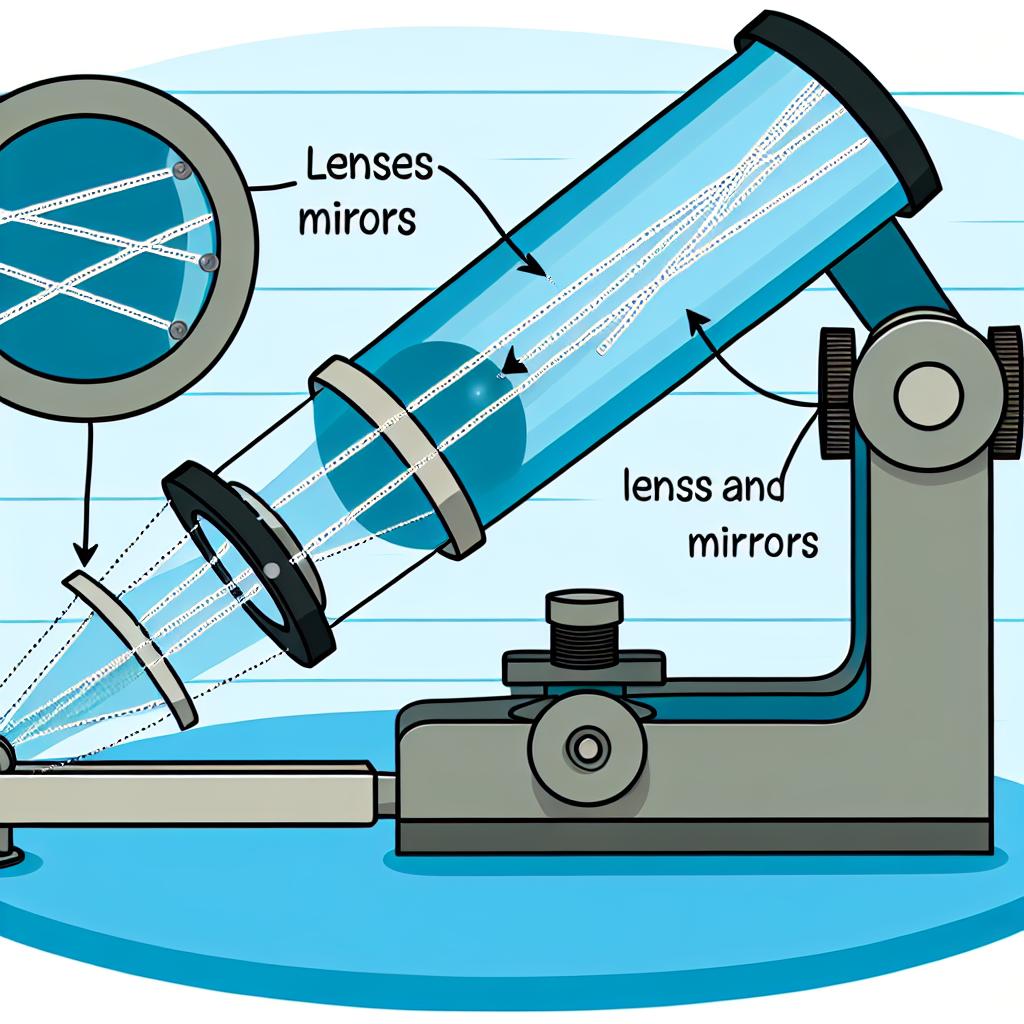Understanding Lenses and Mirrors in Optical Devices
Optical devices, integral to numerous scientific and practical applications, owe much of their functionality to the critical components of lenses and mirrors. These devices not only aid in everyday tasks but also allow visionary explorations of the universe. Understanding the basics of how lenses and mirrors work is key to unlocking the mysteries of these optical instruments.
The Science Behind Lenses
Lenses, vital to optical devices, are usually crafted from transparent materials like glass or plastic. The primary function of a lens is to refract light, which involves the bending of light rays. This phenomenon occurs as light travels through materials of varying densities, altering its speed.
There are two main types of lenses, each serving unique purposes:
Convex Lenses: Known as converging lenses, these have an outward bulge and are designed to bring light rays together. This convergence causes images to appear larger, making convex lenses essential in devices such as magnifying glasses and cameras. Their ability to focus light enhances image clarity and expands the field of view.
Concave Lenses: Also called diverging lenses, concave lenses have an inward curve that spreads light rays apart. This divergence results in smaller appearing images. Concave lenses are particularly useful in correcting nearsightedness in eyeglasses and are also employed in certain camera models to achieve specific visual effects.
The focal length of a lens, which is the distance from the lens to the point where light rays converge, is a crucial measure of a lens’s effectiveness in focusing light. A shorter focal length equates to stronger magnification, thereby playing a vital role in numerous optical device designs.
The Role of Mirrors
Unlike lenses, mirrors function by reflecting light rather than refracting it. Typically crafted from a polished surface coated with reflective materials like silver or aluminum, mirrors are indispensable in directing light in optical devices.
Mirrors are categorized based on their shape, which determines how they interact with light:
Plane Mirrors: With a flat reflective surface, plane mirrors produce images that maintain the original object’s size. These mirrors are ubiquitous, commonly found in household bathrooms and decorative items for their ability to provide undistorted reflections.
Concave Mirrors: These converging mirrors have an inward-curving reflective surface. They are adept at focusing light to a specific point. As such, concave mirrors find applications in powerful devices like telescopes and flashlights, where concentrated light beams are necessary.
Convex Mirrors: These mirrors feature an outward-curving reflective surface, causing light rays to diverge. They are particularly useful in scenarios requiring a wide field of view, such as car rearview mirrors and security applications, ensuring visibility over broad areas.
Applications in Optical Devices
The integration of lenses and mirrors within optical devices has spurred significant advancements across technology and science. These fundamental components are employed in a wide range of applications, from daily-use products to complex scientific instruments.
In microscopes, convex lenses are meticulously arranged to magnify minute objects, such as microorganisms and cells. This magnification allows for detailed observation, which is crucial in fields like biology and medicine. Microscopes enhance our ability to explore the microscopic world, revealing details invisible to the naked eye.
Telescopes employ both lenses and mirrors in their quest to explore the cosmos. Reflecting telescopes utilize concave mirrors to gather and focus distant light, providing glimpses into far-off galaxies. In contrast, refracting telescopes rely on lenses for similar ends, showcasing the stellar and planetary phenomena that captivate astronomers.
Eyeglasses, a practical application of lenses, serve to correct vision by adjusting how light is focused onto the retina. Depending on the individual’s visual needs, opticians may employ either concave or convex lenses to achieve the desired corrective effect.
Cameras leverage lenses to focus light onto film or sensors, capturing images in stunning detail. In DSLR cameras, mirrors play an integral role in redirecting light to the viewfinder, allowing photographers to compose shots with precision.
Conclusion
Lenses and mirrors, by fulfilling the essential functions of bending and reflecting light, form the bedrock of optical device design and function. Their ability to manipulate light with precision enables a plethora of applications, enhancing our interaction with and perception of the world. Mastering understanding these components not only deepens our appreciation for the technology built on foundational principles but also paves the way for future innovations. Whether investigating the microscopic or the astronomical, lenses and mirrors continue to broaden the horizons of technological progress and human curiosity.
This article was last updated on: February 6, 2025


